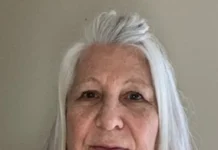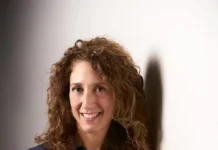PostPress
RadTech International North America’s mission is to promote the use and development of ultraviolet (UV) and electron beam (EB) processing as an industrial technique, offering energy savings, elimination of pollution, greater productivity, higher yields and the opportunity for improved, new or unique products. The association for UV and EB technologies recently promoted Mickey Fortune to associate executive director, education and outreach. Fortune has been with RadTech for nearly 20 years, spearheading a number of important new opportunities and initiatives, while overseeing RadTech conferences and educational programming.
Fortune spoke with PostPress to discuss his time in the industry, educational programs he’s involved with and challenges RadTech has encountered as a result of the pandemic.
How did you get your start with RadTech International North America and the industry?
I began in my early 20’s at a concert promotions company in the DC/Baltimore area handling all the grassroots marketing for club shows and outdoor music festivals. It was a great job, but you get burned out quickly because the hours were insane. When I left that company, I took a position in the association business as a membership marketing manager at an aviation maintenance association. The people on staff were nice, but the association moved too slow for me. It took months to get projects off the ground, so I started looking around for something new, leading me to RadTech. I interviewed with Gary Cohen for an admin/support position at RadTech and 20 years later, I’m still working with Gary, but now in a larger role.
What educational programs does RadTech offer for UV and EB curing technologies?
We feel like everything we do is educational at RadTech as our mission is to educate potential and current users about the many benefits of using UV and EB curing technology, while supporting our members as they develop new products and enter new markets. Some of our main educational products over the past few years have included webinars (especially over the past year and a half), conferences, website updates, health and safety posters, 10-minute email courses and a multi-module health and safety video series we developed especially for our membership.
How do you see the industries involved with UV, UV LED and EB curing embracing global trends such as the circular economy and sustainability demands from brand owners and consumers?
Our members have worked hard to fully embrace sustainability demands from brand owners and consumers, while participating in the circular economy. The challenge always has been the additional cost required to develop and introduce sustainable materials. UV and EB curing always have been sustainable processes from an energy-use perspective, but lately our members have been super focused with end-of-life considerations for products that contain UV- and EB-curable technology. For instance, the recyclability and compostability of food packaging or other paper and plastic products that have UV and EB curable inks, coatings, labels, etc., are receiving extra attention.
While brand owners and consumers demand sustainable products, I am concerned that all the adjacent industries still struggle with what sustainable means. Also, not all recycling plants have the proper technology to accommodate the de-inking of food packaging, which presents a problem that should be rectified by the recycling and waste management infrastructure to really allow for proper recycling of all packages.
What trends are emerging in UV/EB curing that will influence the future of print, packaging and related industries?
In addition to sustainability, we will continue to see growth in the use of UV-curable resins for 3D printing and additive manufacturing applications. We recently had a webinar with Ford Motor Company where the company outlined all of the various ways it plans to use photopolymer-driven additive manufacturing in the coming years. From sneakers to football helmets, this highly adaptive technology will continue to forge ahead into new markets, and UV- and EB-curable technology will be there to enable creativity and innovation. Personally, I would be interested to see how the future of home delivery for groceries and other items affects packaging development. I would assume brand owners would be looking for inks and coatings with enhanced durability properties for longer stays in warehouses prior to shipping to a consumer.
Which markets and verticals are growing their use of UV and EB curing? What is influencing that growth?
As I’ve mentioned previously, 3D printing and additive manufacturing will continue to grow at an unprecedented rate, especially as material properties improve toward production-ready parts to serve unique, localized markets with bespoke needs. I also believe that because of the updated report released by the United Nations on climate change, there will be an even stronger push toward greenhouse gas emissions reduction and sustainable solutions. UV/EB technologies always have been a part of the greenhouse gas reduction solution and will play a large part across all manufacturing channels as we work to meet reduction goals.
What are the biggest challenges the UV/EB curing industry faces? How should the industry respond to successfully grow and thrive?
Over the past year, we saw several supply chain shocks across the industry, which will continue to persist as long as COVID-19 persists. Even before that, we saw difficulties in obtaining a variety of chemicals and materials because of other supply chain issues. In addition, we struggle with a variety of regulatory agencies that are slow to approve new materials, which stifles the growth and innovation necessary to offer more sustainable products to brand owners and consumers. Looking toward the future, the key to successful growth is in new materials, developed in a more distributed fashion to mitigate supply chain issues, while also being able to better support and serve local users and developing markets.
What are your predictions for the UV/EB curing industry in the next five to 10 years?
UV/EB curing technology always has been a responsive and flexible technology, enabling and supporting new markets. In the next five to 10 years, we will continue to see growth in UV/EB materials to support emerging market needs, including a continued drive for sustainable products that offer anti-microbial properties.





